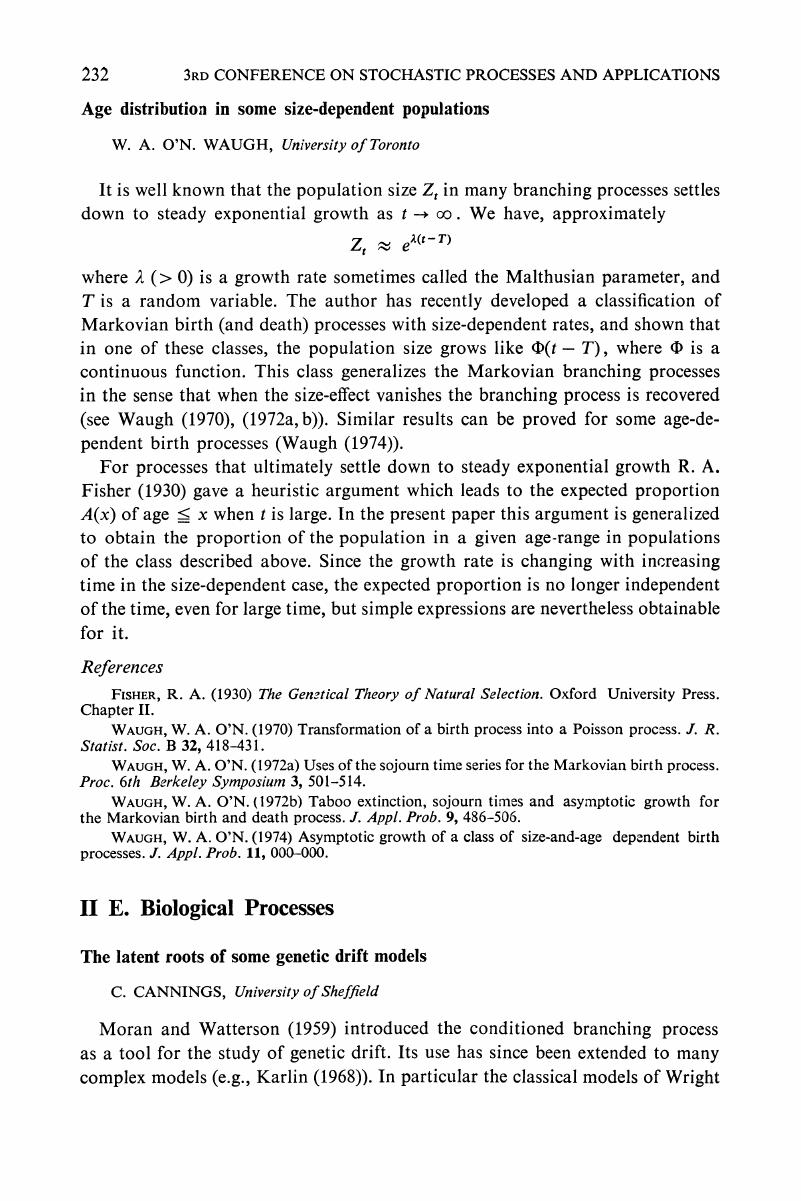No CrossRef data available.
Article contents
The latent roots of some genetic drift models
Published online by Cambridge University Press: 01 July 2016
Abstract
An abstract is not available for this content so a preview has been provided. Please use the Get access link above for information on how to access this content.

- Type
- II Contributed Papers
- Information
- Copyright
- Copyright © Applied Probability Trust 1974
References
Chia, A. B. and Watterson, G. A. (1969) Demographic effects on the rate of genetic evolution. I. Constant size populations with two genotypes. J. Appl. Prob.
6, 231–249.Google Scholar
Karlin, S. (1968) Equilibrium behavior of population genetics models with non-random mating. II. Pedigrees, homozygosity and stochastic models. J. Appl. Prob.
5, 487–566.Google Scholar
Karlin, S. and McGregor, J. (1965) Direct product branching processes and related induced Markoff chains. I. Calculation of rates of approach to homozygosity. Bernoulli, Bayes, Laplace Anniversary Volume.
Springer-Verlag, Berlin. 11–145.Google Scholar
Moran, P. A. P. (1958) Random processes in genetics. Proc. Camb. Phil. Soc.
54, 60–71.Google Scholar
Moran, P. A. P. and Watterson, G. A. (1959) The genetic effects of family structure in natural populations. Austral. J. Biol. Sciences
12, 1–15.Google Scholar




